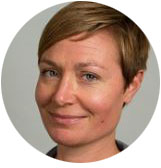TAVR Mortality Declines as Volumes Increase: So How Many US Centers Are Enough?
In-hospital mortality rates for TAVR in the first 4 years following its introduction in the United States fell as operators grew more competent with the procedure, and the improvement was particularly marked for those doing higher volumes of procedures.
John D. Carroll, MD (University of Colorado Hospital, Denver, CO), presented the data on almost 43,000 TAVR procedures, collected in the ACC/STS TVT Registry, here at the American College of Cardiology 2016 Scientific Sessions. The analysis was limited to aortic valve procedures and included hospitals performing just a handful of TAVR cases, to centers performing more than 600 per year. Some centers had also participated in the pivotal clinical trials that originally led to approval of the two devices marketed in the United States.
 The average mortality rate across all 370 centers treating patients between early November 2011 and mid-July 2015 was 4.03% at 1 year.
The average mortality rate across all 370 centers treating patients between early November 2011 and mid-July 2015 was 4.03% at 1 year.
Improvements in early survival were marked in the “early learning phase,” Carroll commented, reflecting increasing skill level among operators. Expressed as case-sequence numbers, unadjusted mortality rates fell from roughly 5% for the first few patients to between 3% to 4% after the first 100 patients. Even after the first 100 patients were treated at a given center, however, “there continue to be improvements in patient outcomes” with, mortality falling to 3% after 200 patients and to 2% for centers performing at least 400 procedures, he reported. Similar declines were shown in analyses that adjusted for other factors, including new iterations of valve prostheses.
While volumes may be a marker of better outcomes, they do not prove causality, Carroll noted. However, even after adjustment for other contributing factors, the association held up. A similar association with higher volumes was seen for vascular complications and bleeding, but not for stroke, which remained more or less constant at 2% over the 4-year period. Of note, higher volume did not necessarily ensure best outcomes. Some low-volume centers had “excellent outcomes,” Carroll noted, while some higher-volume centers fell short.
Hospitals wanting to offer TAVR have to meet criteria set out by the Centers for Medicare & Medicaid Services, including committing to perform 20 or more TAVR procedures annually. The current data can be used to help inform discussions as to whether these criteria need revisions, Carroll said, adding that the original recommendations were not data-driven. While he would not suggest a specific new benchmark based on his data, he did acknowledge that 20 patients “is a low volume, and at 20 you’re not even over the initial learning period.”
Following Carroll’s presentation, Jeffrey Popma, MD (Beth Israel Deaconess Medical Center, Newton, MA), called the findings “very provocative. It really does say something in terms of experience really matters.” What’s not clear, he added, is whether those annual procedures need to be done at a specific rate per week or per month in order for competency to be maintained.
Carroll replied that all centers performing TAVR in the United States are included in the TVT Registry as a perquisite for offering the procedure and that they receive regular reports on their performance, including comparative data.
Neil Moat, MD (Royal Brompton Hospital, London, England), raised the question of whether the United States actually needs more TAVR centers, given the signal of worse results at lower-volume centers.
According to James B. Hermiller Jr, MD (St. Vincent Heart Center of Indiana, Indianapolis), the answer to this is a “moving target,” particularly as TAVR moves into lower-risk patients. At the same time, whether the stark relationship between bleeding/vascular injury and volume diminishes with newer, lower profile devices remains to be seen, he added. “But should we have more than 400 sites in the US or not? These data suggest no,” he said.
Source:
- Presented at: American Society of Cardiology 2016 Scientific Sessions. April 3, 2016. Chicago, IL.
Disclosures:
- Carroll reports consultant fees/honoraria from Philips healthcare; serving on the DSMB for Tendyne; and receiving research grants from Direct Flow, Edwards Lifesciences, Evalve/Abbott Structural Heart Disease, Philips healthcare, and St Jude Medical Corp.
Related Stories:
- SAPIEN 3 Superior to Surgery Among Intermediate-Risk Patients in Observational Trial
- As the Number of US TAVR Centers Grows, Patient Outcomes Vary
- TVT Registry Provides Picture of TAVR Risk Factors, 1-Year Outcomes
Shelley Wood was the Editor-in-Chief of TCTMD and the Editorial Director at the Cardiovascular Research Foundation (CRF) from October 2015…
Read Full Bio

Comments